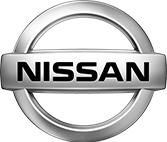
Which are more complicated: transmissions or engines?
The average vehicle owner would probably shrug. Others may answer, “engines!”, because engines make a car run – right? Like a body, the transmission and engine play important yet distinct roles to ensure that a vehicle properly functions. However, when considered individually, the transmission is more complicated than the engine. In the content below, we explore a transmission’s role, fluid design, and repair process in comparison to an engine.
The Role of the Transmission vs. The Role of the Engine
The transmission and engine resemble the most important parts of a human body: the brain and the heart. The heart initiates blood flow, constantly pumping and performing the same tasks at different paces to keep the body alive. Similarly, a vehicle’s engine consistently performs the same tasks around one to two thousand revolutions per minute (rpms). Without it, the vehicle couldn’t survive. It generates the raw power to promote movement.
On the other hand, the brain makes important decisions, utilizing the power the heart provides to properly function. Similarly, the transmission takes the engine’s power and makes it functional for different situations. It does this by changing gear ratios allowing a multiplier effect on engine power.
The maximum effort an engine can produce is achieved at redline where the engine is performing at potentially 6,000 rpm. It can be more or less depending on the vehicle. This is a dangerous situation as the engine is under maximum strain. An engine will not last long if it is constantly being run at redline. Also, this condition is terrible for fuel economy.
The solution?
The transmission uses sensors and pressure to determine both the speed of and load on a vehicle to then decide the ideal gear ratio. The selected gear will allow the engine to stay at a lower RPM that allows for a more comfortable drive while optimizing fuel economy. Higher RPMs are reserved for situations where full throttle is engaged, and performance is prioritized over comfort and fuel economy.
These complex decisions are made by the transmission. The engine is important and “works hard,” yet it’s the transmission that must “work smart.”
Transmission Fluid vs. Engine Oil
Partly due to purpose, transmission fluid is more complicated than engine oil. Transmission fluid is primarily designed for hydraulics, moving parts within a transmission to select gears via the valve body and solenoids. Fluid design has changed with the transmission, evolving to work with every transmission part, hard and soft.
Viscosity has become an increasingly important fluid characteristic. A highly viscous fluid flows through a valve body different compared to a fluid with low viscosity. This makes sense yet transmission fluid can fluctuate 150 degrees between a cold start and a prolonged drive. As temperature increases, viscosity decreases. Basic science. This should have a noticeable impact on transmissions, particularly those with many gears where the transmission is constantly shifting. This explains the transition away from predominately petroleum-based transmission fluids to fully synthetic or synthetic blend transmission fluids. The latter is less viscous when cold and handles changes in heat better than traditional petroleum-based automatic transmission fluids. The hydraulic capabilities of synthetic fluids vary less across temperature than non-synthetic fluids.
As a secondary objective, transmission fluid is a lubricant, designed to control friction and prevent overheating. Keep in mind, friction is required and expected in the clutches for a transmission to function properly, therefore the objective is not to simply reduce friction but to manage it successfully. If this is not accomplished, clutches and bands would “chatter” causing an uncomfortable condition for the driver. Friction modifiers are incorporate in the fluid composition to allow a smooth transition from one gear to the next. As transmissions evolved from two, three and four-speeds that dominated the 20th century, recent transmissions with five to ten speeds require a more complex fluid. Motor oil science has evolved but to a lesser extent.
Engine oil’s primary responsibility is lubrication. Engines get hot and motor oil is meant to manage engine temperature and reduce friction. There has been an increased use of synthetic fluids for engine oil however it is still seen as an optional upgrade for most vehicles rather than a necessity like many modern transmissions.
Sheer variety plays a role in comparison as well. For example, engine oil can be divided into four primary categories: synthetic oil, synthetic blends, high mileage oil, and conventional oil. Transmission fluid is often separated into countless classes with a plethora of subcategories that require an encyclopedia to detail.
In short, transmission fluid is a complex marvel of chemistry that carries substantial responsibilities. Motor oil is also important, yet it breaks down quickly and is tasked to do less than its transmission counterpart.
Based on these observations, why do most vehicle owners know to change their motor oil periodically however most vehicle owners never lift a finger to change their transmission fluid? It is a costly mistake to neglect periodic fluid maintenance services on a transmission.
Transmission Repair vs. Engine Repair
At first glance, engine repair appears to be more complicated than transmission repair, simply because the process can take longer. In fact, pulling an engine from the body of a vehicle is extremely challenging. Everything is tied to an engine. To use a tongue-in-cheek analogy, engine overhaul can be compared to decorating a Christmas tree. The engine block is installed like the tree; then, various parts are slapped on like ornaments. An average vehicle owner could purchase a spark plug and change it on the top of their engine. Changing a water pump and thermostat is not easy however it is possible for an individual who is handy. These types of repairs are impossible on a transmission.
Transmissions cannot be installed with stand-alone parts placed on top. The average transmission is comprised of over 500 distinct parts, plus or minus a couple hundred. Yes, the variation from one transmission to the next is significant. From solenoids, valve bodies, clutches, planetary gears, bands, bushings, drums, pistons, bearings, filters, gaskets, seals, pumps, and sensors, only to name a few, transmission repair specialists deal with hundreds upon hundreds of individual parts in every repair, rebuild, or replacement. This explains why transmission specialty shops exist. When was the last time you saw an “engine specialty shop?” They don’t exist, because engine work can normally be completed by a general mechanic.
Even though removing an engine from a vehicle can be more time consuming than removing a transmission, the latter is not easy. Some vehicles require nearly 20 hours of removal and installation (“R&I”) book hours which is standardized across the automotive repair industry. That means it would take a trained technician 2 ½ days to remove a bad transmission and install a repaired transmission. That does not include the actual time to disassemble, inspect and rebuild the original transmission. You may now see how transmission repairs can be labor-intensive!
Whether it’s the role of a transmission, the fluid science or transmission repair requirements, the answer should be fairly obvious: Transmission repair is more complicated than the engine repair! As you think about transmission maintenance or repair, remember to call on your trusted local transmission repair shop for assistance.
Additional Considerations
Why are transmissions considered more complicated than engines?
Transmissions are deemed more complex due to their role in converting engine power into usable force under various driving conditions, requiring intricate control and fluid dynamics. Unlike engines that primarily generate power, transmissions must intelligently manage and apply this power, adapting to diverse driving scenarios with precision.
What makes transmission fluid more sophisticated than engine oil?
Transmission fluid serves multiple critical functions, including acting as a hydraulic medium, lubricant, and coolant, adapting to temperature changes while maintaining performance across a broad range of operating conditions. This complexity ensures transmissions operate efficiently, highlighting the fluid’s advanced engineering compared to engine oil.
Why is transmission repair viewed as more complex than engine repair?
Transmission repair complexity stems from the sheer number of parts, the precision required in assembly, and the specialized knowledge needed to diagnose and fix issues. The detailed understanding of transmission mechanics and fluid dynamics surpasses the scope of general engine repairs, making it a specialized field.
Advanced Transmission Center: A Trusted Repair Shop
At Advanced Transmission Center, we leverage years of expertise in every project. If you’re experiencing transmission issues, please stop in! We always offer a free TrueTest inspection to pinpoint your vehicle’s specific issues before you spend a dime. Our goal is honesty and transparency throughout the entire repair process. Contact us today to begin a conversation! We look forward to serving you.
Southwest Metro Denver (Lakewood/Littleton): Call (303) 922-4102
Northwest Metro Denver (Westminster): Call (303) 421-4140
Advanced Transmission Center is a Colorado-owned and operated auto repair shop with locations in Denver / Lakewood and Westminster. ATC specializes in driveline issues such as automatic transmission repair, four wheel drive repair, clutch replacement, differentials, manual transmissions and CVT. As Colorado's first AAA approved shop our goal is to provide accurate, timely service with exceptional customer satisfaction. All of our technicians are certified in the latest makes and models and we are one of the few transmission repair shops with a nationwide warranty.



 Free Customer Towing Service
Free Customer Towing Service  Free TrueTest™ Inspection
Free TrueTest™ Inspection  Fast Transmission Services
Fast Transmission Services  Comprehensive Warranty in Denver
Comprehensive Warranty in Denver 

























